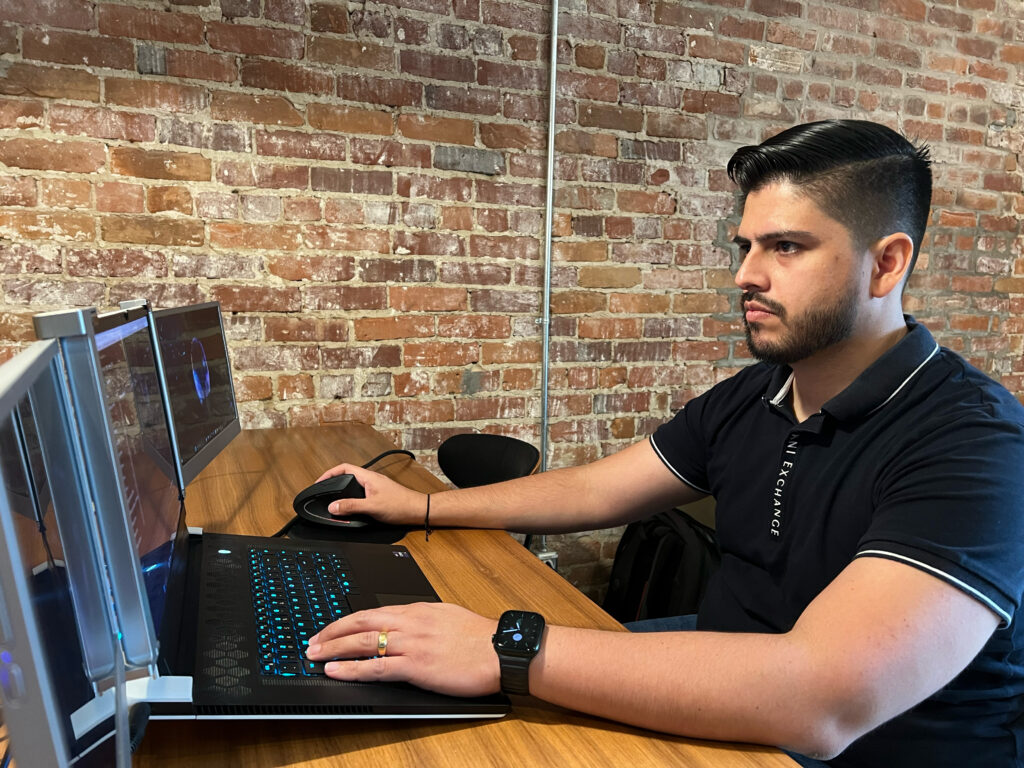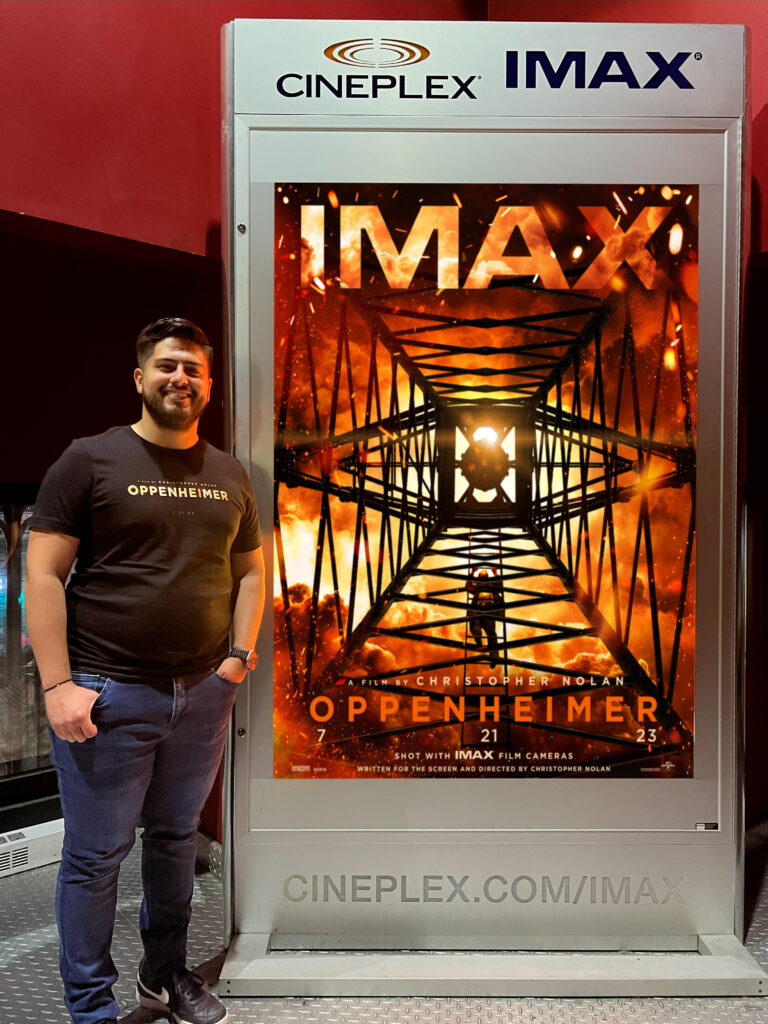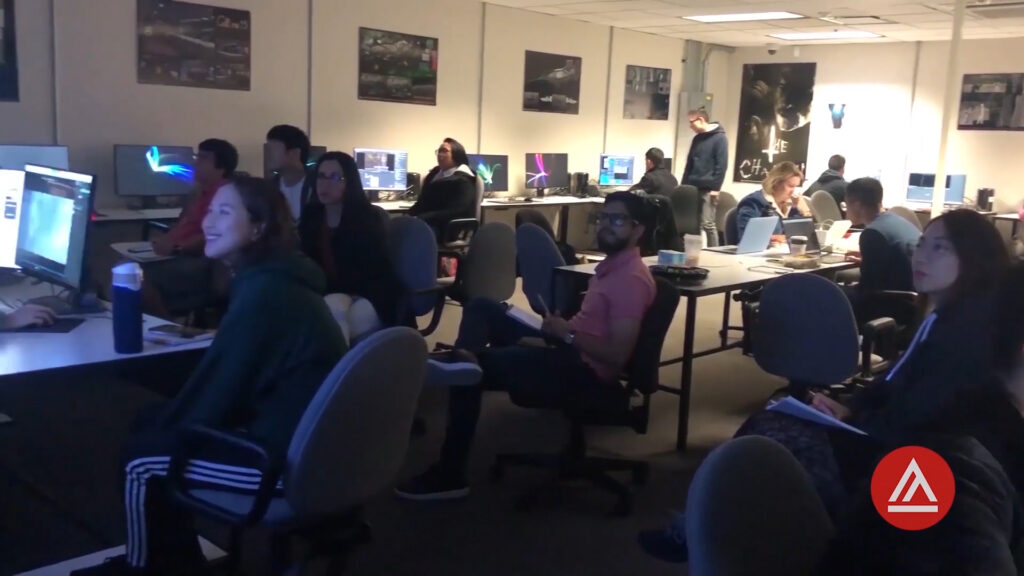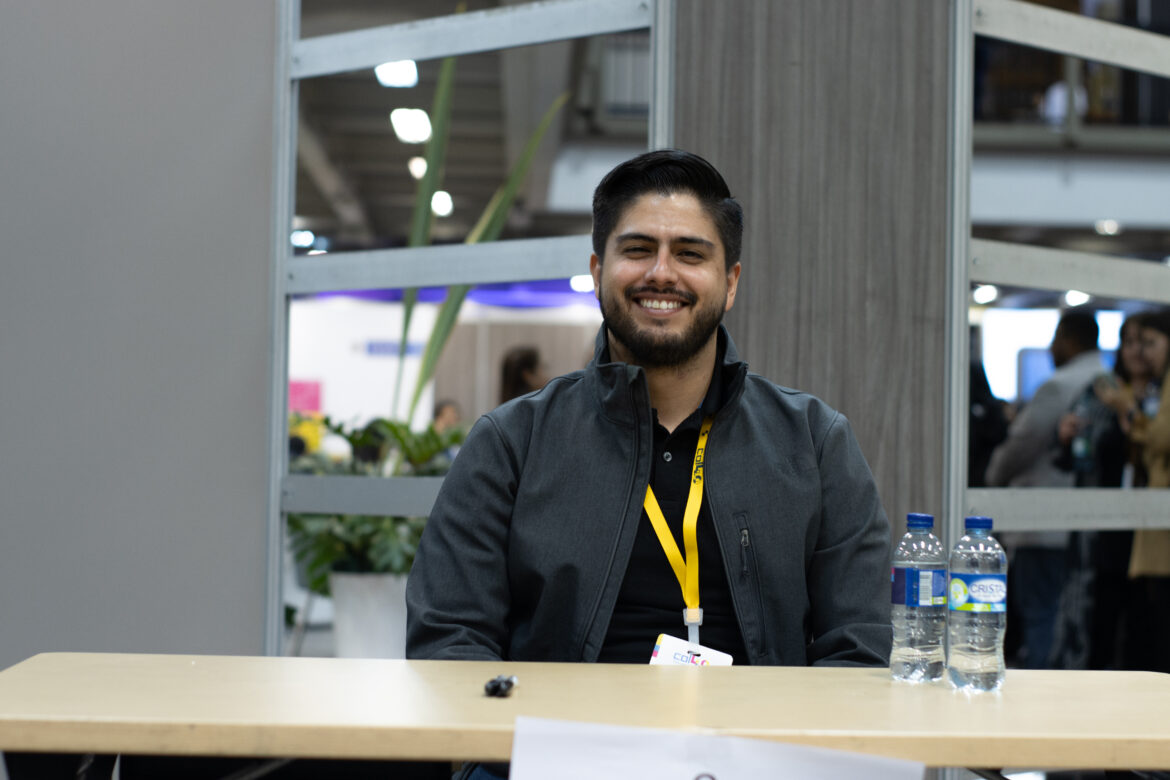By Kirsten Coachman
When Art U News last spoke with Academy of Art University alum Sergio Rincón, he shared how filmmaker Christopher Nolan’s “Inception” was one of the films that inspired him to pursue his master’s degree in animation and visual effects. Four years later, we caught up with the motion graphics artist and compositor to chat about his latest project—a full-circle moment of sorts—working on Nolan’s latest blockbuster film, “Oppenheimer.”
Rincón graduated from the Academy in May 2020, in the thick of the COVID-19 pandemic, and had to pivot his career plans. While he was able to use his motion graphics skillset in the world of advertising, he still had his heart set on working in film.
“It’s kind of tough because the recruiters prefer that you have the experience in the field that you’re applying for,” admits Rincón. “So, at the beginning, it was kind of difficult to find a job in the movies industry because I didn’t have a blockbuster film in my IMDB, but it helped me that I had some indie films that I worked on, an internship that I did in San Francisco and in StudioX that it helped me to get my foot in the door.”
And in 2021, an opportunity came knocking.

“I was able to find a job in a studio called The Third Floor doing post-vis,” said Rincón. “And I had the chance to work on two movies at The Third Floor: ‘Uncharted’ and then ‘Dr. Strange in the Multiverse of Madness.’”
Since then, Rincón has continued to build an impressive résumé, working at Perception, where he worked on films “Black Panther: Wakanda Forever” and “Ant-Man and the Wasp: Quantumania,” and TV series “Hawkeye” and “I Am Groot.”
As a motion graphics artist and compositor at DNEG, Rincón created holograms and magical effects on two TV series, “Extrapolations” and “The Witcher: Blood Origin.” When Rincón wrapped those projects in the summer of 2022, his supervisor offered him a new assignment working on shots from “Oppenheimer.”
“At the beginning, [I] was trying to replicate some tests that Andrew Jackson (‘Oppenheimer’ VFX supervisor) made in AfterEffects and [to] make the high-resolution version of those tests in Nuke,” explained Rincón. “So, I was like, ‘Okay, let’s do it.’”

He continued, “They liked the new versions that I made and started assigning me more shots. My first booking was for three months, and then [it was] extended.”
Rincón shared that the shots he worked on can be seen in the film and mainly involved the quantic world. In the film, while working out different theories, J. Robert Oppenheimer (played by Cillian Murphy) visualizes them in his mind. This is depicted on screen in swirls of particles. As Rincón explained, each of these shots was first shot practically—without the use of special effects.
“They tried to get everything on camera, on set. They shoot very different elements practically,” said Rincón. “They shoot explosions in miniatures. They shoot like dust, smoke, and different elements separately. They play a little bit with some elements called termites to create different effects. Some of them were very close to what the director has in mind, and some needed to combine different elements to create the final shot.”
That’s where Rincón’s role comes in. He and the rest of the VFX team—22–25 people, Rincón estimated—would receive test shots from Jackson, who explained what they wanted to achieve with each shot.
“And that was the starting point,” shared Rincón. “They gave us a huge library of elements, and we needed to search in the library of elements, which ones were the correct ones for every single shot, and start playing with modifying the scale, applying transformations, distortions, lens de-focus, and adding different parts of elements, [then] combine it to get the result that the director wants.”
The VFX team was told early on that they needed to work with “atoms moving fast” and create different streams made out of particles. “They were very abstract,” said Rincón. “They told us that they [didn’t] want something 100% physically correct; it’s more like something that is visually appealing and that tries to explain all the theories that Oppenheimer has in his head.”
In total, Rincón worked on 15 shots for “Oppenheimer,” including an early explosion scene. He noted that while the pipelines and tools are the same as the ones that he used during his time at the Academy, the deadlines are vastly different.

“[In school], you have more time to work on one single shot; in a studio, on a big blockbuster movie, you have [less time], and the level of detail you need [has] to be extremely precise,” Rincón explained. “You need to be extremely careful of every single pixel. You need to be more careful about every single detail that you are working on.”
Rincón cited his time in StudioX at the Academy as being formative in his career. The School of Animation & Visual Effects’ (ANM) premier program allowed him to apply his knowledge of the tools and pipelines he learned to real-world projects while still in school.
“I basically did the same work that I did on ‘Oppenheimer’ because I had my background in motion graphics, and I was studying visual effects, majoring in compositing, and Catherine Tate allowed me to do some stuff in AfterEffects, then rendering, then going back to Nuke and do the compositing,” shared Rincón. “And that was the workflow that I had for ‘Oppenheimer.’ I think that approach allowed me to be prepared for that opportunity.”

For 3D ANM Executive Director Catherine Tate, seeing one of her former students succeed in the industry “feels so good.”
“When we started StudioX, it was built with this outcome in mind,” said Tate. “Giving the students an opportunity to work on real-world projects/production so that when they graduate, they are used to working in the production pipeline and can hit the ground running on blockbuster films like this one.”
Tate added: “To be successful in any field, you need to work hard and perfect your skills. Sergio worked tirelessly in the classroom and on his projects outside of school. This effort is what sets him and our students apart from others coming into the industry.”
Working on “Oppenheimer” was no doubt a highlight reel moment for Rincón. The motion graphics artist and compositor was able to work on a project directed by a filmmaker whose films sent him down the path of working in VFX.
“It was a dream come true, definitely.”
